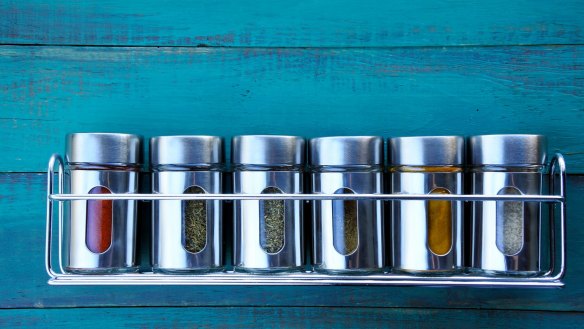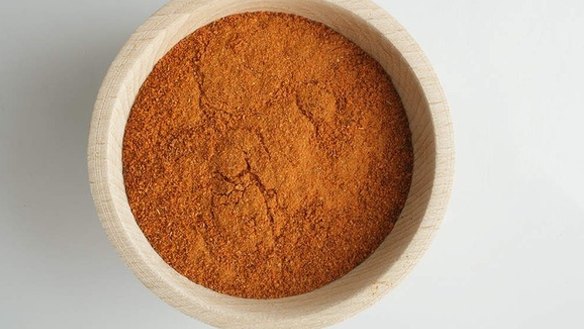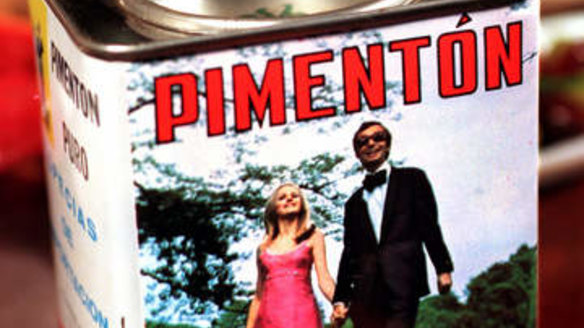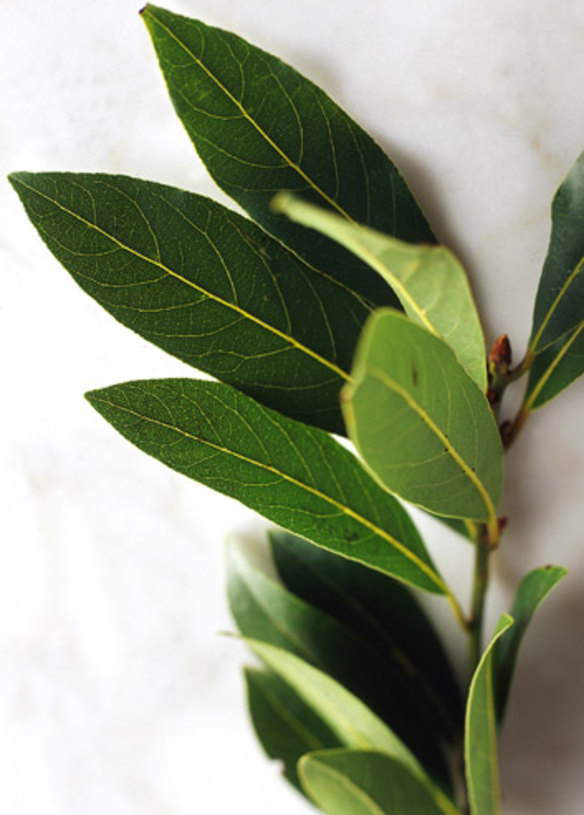How to organise your spices so that you'll actually use them before they go bad

There comes a point in every cook's life when you realise you have a spice problem. Usually that realisation comes when you're in the midst of a recipe and - because you haven't put your mise en place, since you're in a rush and who really does that anyway - you open your cabinet in search of a spice only to end up sliding jars this way and bottles that way before a flimsy plastic bag of bay leaves tumbles out into your sink to meet its ruin in a pot you've left to soak.
When that moment came for me, it wasn't bay leaves - it was a container of cracked wheat that I'd precariously perched between a can of artichokes and a jar of beans, and now it is half empty because it's one of those flimsy plastic tubs with lids that pop right off if you look at them the wrong way.
It doesn't have to be like this. You can organise your spices and dried herbs (and perhaps even the rest of your pantry!) so that you know exactly what you have and where. The rewards are many: You won't be as overwhelmed by mess. You will become a more efficient cook. And you will waste less.

To reach your spice-organising ideal, you will have to do some thinking along the way. The ultimate goal is to find an organisational method that works for you. This is not a guide to creating an Instagram-perfect, #kitchengoals, hyper-uniform spice cabinet - unless, of course, these guidelines lead you in that direction.
First, find out what you have - and what needs to go. Spread out all of your spice and herb containers on a table or counter. (Using a sheet pan to ferry everything is helpful.) This is also a good time to quickly clean that now-empty space.
Next, examine: How old is that tin of ground mustard? When did your mother-in-law give you that jar of curry powder? Where did those whole cloves even come from, and why is the label in German? The general guideline for how long to keep spices is about six to eight months for ground, a year or two for whole and several years for certain sturdy spices such as whole nutmeg and cinnamon sticks. (More on that below.) Open and smell the contents - cautiously and slowly, remembering these are potentially strong and sneeze-inducing - is there a discernible scent within? Does the turmeric, for example, have a fruity, faintly gingery smell? Take a tiny taste. Does the ground sumac have notes of berries, or is it merely a little tart? Has the cayenne's spiciness faded? Is the ground cinnamon flat and boring, and does it remind you of dirt? If you think a spice has discernible flavour, then keep it, even if it's faded but only if you'll commit to using it soon. If the taste and/or scent is dusty or strikes you as off in any way, toss it - that mustiness can seep into whatever you're cooking.
The ultimate goal is to find an organisational method that works for you.
To use up the aged-but-still-usable spices and herbs: Dump them all into a small jar that stays on your counter, next to your salt and pepper. Call the contents of that jar your "house blend" and then dip into it whenever you need to add a jolt of flavour. Doing this will lead you to discover that all spices can fare well together. (Yes, there are flavour affinities and combinations specific to cuisines and dishes - but your house blend can be anything you want it to be.) Mine is currently a mix of smoked paprika, sumac, dried dill, lemon zest and a random blend given to me by a neighbour. It's constantly changing but always works with roasted vegetables, fish, tofu, a pot of beans, popcorn and really, truly, anything savoury. I keep it in a short and stout swing-top glass jar, so it's easy to open and scoop with a spoon.
Now that you've inventoried, you're ready to choose an organising method to match your space and personality. Do you have Type A tendencies? Alphabetising and a spreadsheet to catalogue might be nice. Are you more of a visual person? Perhaps colour-coding is the way to go. Out of sight, out of mind? Move those spices front and center, and you'll be less likely to forget about them. To give you some options, I spoke with a few spice purveyors and drew from my own experiences in organising The Washington Post's Food Lab. (And, yes, dear astute reader, by the end of this I, too, will have gone through my home cabinet to fix its messiness and save the rest of that cracked wheat.)
Alphabetising is a good option, especially when there are multiple cooks in the kitchen.

I first chose the frequently used seasonings and ordered them by spice name and classification. For example: "paprika, smoked Spanish" and "paprika, sweet Hungarian;" "coriander, ground" and "coriander, whole."
Notably, I affixed labels under each container (in the drawer itself) so that each spice can easily and quickly go back in its assigned spot. If you go this route, it may be helpful to purchase containers that are similarly sized. (Glass or tin are nice - clear tops are better, so that spices are visible.)
Lesser used spices and bags for refilling are kept in a cupboard, with an inventory taped inside the door (and also saved in a Google spreadsheet) to help keep track.

Of course, you needn't be quite so regimented with your own spice cabinet.
For the visual type, do as Danny Dubbaneh, co-founder of the za'atar-selling, Washington-based business Z & Z, does: Organise by flavour profile and colour. The bottom shelf of his spice cupboard features the everyday players - salt, pepper, sumac, za'atar, garlic and onion powder. Brown spices (cumin, cinnamon, coriander, nutmeg, etc.) are next, followed by green herbals and aromatics such as oregano, thyme and mint. Yellow curry, mustard and turmeric follow, along with the red spicy stuff: cayenne, paprika, ras el hanout, chili powder, chipotle and so on. There's a rotational section of new things he's trying out, too.
Visibility is key for Sana Javeri Kadri, founder and CEO of the turmeric-focused, Oakland-based Diaspora Co. She uses a masala dabba - an Indian spice organiser that is often round and made of stainless steel, with six or seven smaller round containers housed within - to store her frequently used spices. Right now it's got smoked paprika, cumin, turmeric, kosher salt, za'atar and "some very floral citrusy peppercorns." The masala dabba is kept in a kitchen drawer; other spices stay in wide-mouth jars for easy scooping with tiny masala dabba spoons. Again, keeping things in sight is important - you're more likely to use your spices if you can plainly see them, rather than having to dig through a stuffed drawer or cluttered cabinet. "I started putting heat - chillies and that sort - on a tray that's below eye level," Javeri Kadri says. "That way I can glance at them all at once and pick my heat of choice."
There are many ways to add visibility, even if you've got cramped quarters:
Buy a small wire or mesh shelf to add another level on which to stack spices. This is especially useful in cabinets, where spices tend to clutter together and become messy.
Use a quarter sheet pan to store the spices on the bottom level, so that you can easily remove all of the spices in one go.
Label the top of the spice jars that are stored on the sheet pan, so you can quickly scan them to see what you've got. (Plus, if you ever remove a bunch of spices for a cooking project, you'll more easily know which ones stay on top of the wire shelf and which ones go back to the sheet pan.)
You might also buy a few magnetic spice tins to stick to the side of your refrigerator. These are best for whole spices - such as peppercorns, caraway seeds and bay leaves - rather than powders, which are slightly more annoying to clean up should you not replace the tin's cap correctly.
Go down a few online organising rabbit holes and decide whether you'd like to go all-in and make A Spice System with coordinating jars, or if you can be more relaxed and use whatever containers you've got to make it work. The only right way is the way that works for you.
"Organisation is all in service of use," says Ethan Frisch, co-founder of Queens-based spice company Burlap & Barrel. He keeps spices in large plastic containers, with the regularly used ones on top and the less frequent ones on the bottom. "I set it up intentionally so that if there's something I want to be cooking with more, I put it up in the front so that I see it and know that it's there." Similarly, when something seems to be getting old, Javeri Kadri will seek out cooking projects to use up that spice.
Know when it's time to say goodbye. If your spices are old and spent to begin with, they won't do much good in your cooking. While keeping the above-mentioned general guidelines in mind, also think about your sourcing. As Frisch points out, "The supply chain behind spices can vary so much - I don't think there's a hard and fast rule about how long you'll keep them." If you buy from a supermarket, then chances are the spices have taken a time-consuming (and possibly exploitative, but that's another story) journey from being harvested and processed to landing in your cart. Spice shops or brands that openly advertise the harvest dates will almost certainly provide a fresher product. "Really you should pay attention to the flavour and how you like it. Spices don't improve with age, so you should use them as quickly as possible," Frisch says.
You're ready! Go forth and organise with purpose, but also ask questions about your sourcing. Learn to be more mindful of not only the spices you buy but also the quantity: The bulk section can be a good place to purchase just the amount you need, rather than, say, an apocalyptic-size Costco container. Experiment to find an organisational system that works, and don't be afraid to change it up as you go. After all, you're bound to get a new specialty blend that needs a home in no time.
The Washington Post
The best recipes from Australia's leading chefs straight to your inbox.
Sign up- More:
- Kitchen must haves